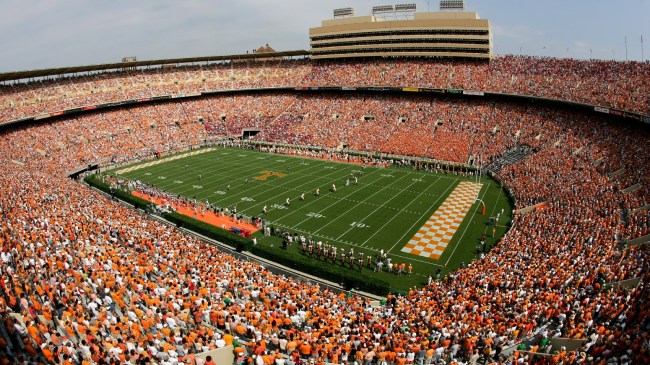
Getty Image
The Tennessee football program is set to hike ticket prices in the 2025 season by nearly 15%. A large portion of that increase will go directly to Volunteer players.
A “talent fee” is the reason for the spike, a trend that will likely be seen throughout the country due to the implementation of NIL.
More from Adam Sparks of Knox News:
The University of Tennessee will increase football ticket prices and the required donations that accompany them by an average of 14.5% in 2025 with most of the new cost going to a “talent fee” to pay players.
On Tuesday, UT informed season-ticket holders of the price hike via email, along with a video of athletics director Danny White explaining the purpose of the move.
Revenue sharing for athletes is coming to college sports as early as next year.
The richest schools will opt in by funding an estimated $22 million pool to pay athletes directly and about another $5-10 million to fund additional scholarships. The remaining schools could be left in the dust.
UT is opting in, and fans will pay a portion of that cost of competition.
While understandable given the importance of NIL in terms of recruiting and competition, it offers yet another way to price the average fan out of a Saturday afternoon of entertainment.
Tennessee’s football stadium already boasts some of the highest alcohol prices in the nation at around $13 a pop. Now, the Vols will vie for the most expensive ticket prices, too!
In many ways NIL is ruining the college experience for fans and administrators.
Arkansas’s athletic director Hunter Yurachek spoke on what he called an “awful” time to be the leader of a major NCAA program.
He was heard crying poor to everyday donors, claiming that his football team will be unable to compete for titles without their support. He suggested that each person give at least $100 a month to help close the deficit with SEC rivals.
This, of course, came after he pledged a rumored $5 million NIL budget to John Calipari and the basketball team after swiping him from Kentucky.
“It has been terrible [being an AD in the NIL era]. It’s been awful. NIL, the way it was intended, was if a student-athlete had a value to their name, image, or likeness, and there was a business product or service that wanted to use a student-athlete to market… they could receive valid compensation to do so…
“But in college athletics, we are our own worst enemy, and we find a loophole to every single rule in the rulebook. We found a loophole where we created these things called collectives. And that’s donors pooling their resources together to pay student-athletes under the auspice of doing charitable work.”
-Hunter Yurachek
Unfortunately, it doesn’t appear to be going away, and the NCAA seems to have little interest in reining things in.
Fans can continue to expect to be nickeled and dimed as schools find new ways to raise money for player payment.
NIL has been a good thing in many ways for the student-athlete. It’s transformed, though, into something that doesn’t match the initial proposal.
This current set up of asking low to mid-level donors to fork out cash is likely unattainable considering the return on investment is far from guaranteed. While name, image, and likeness has benefitted the players, it’s harming those that support them.